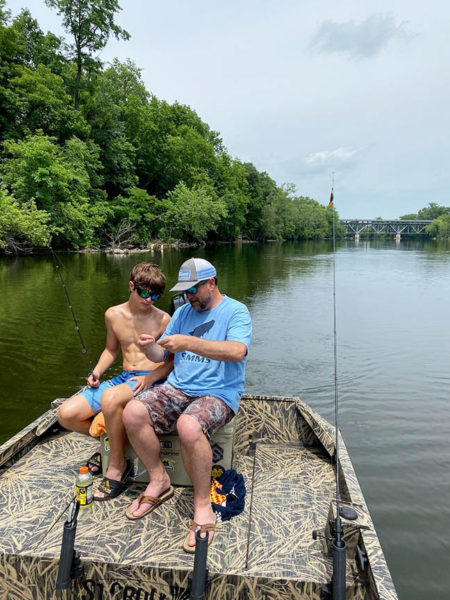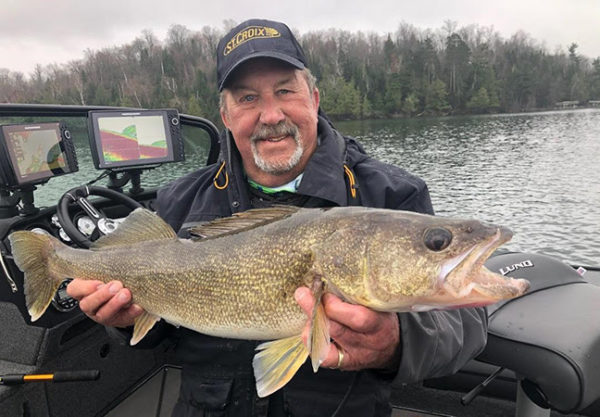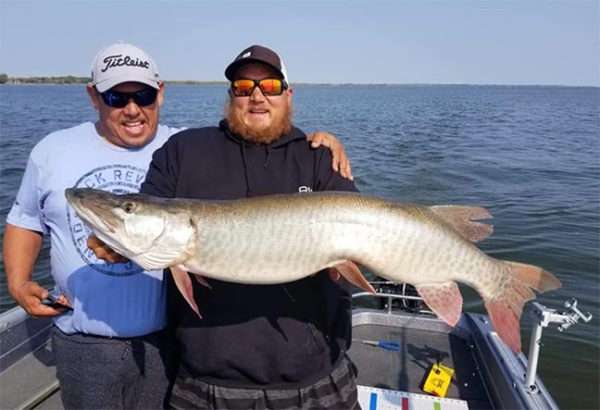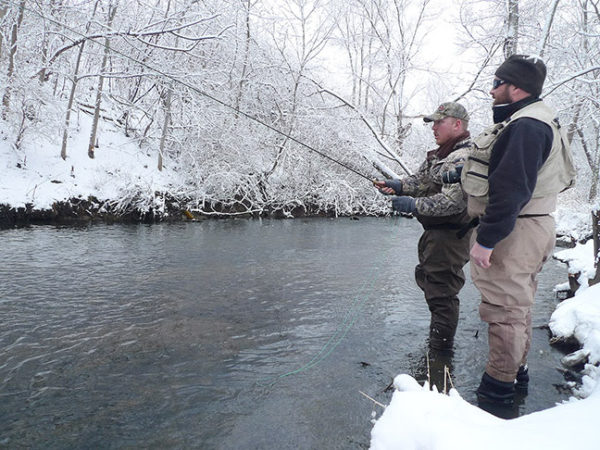The Captain’s Guide to Repeat Clients & Maximizing Tips
Category: article
Jun 5th, 2022 by Keith Worrall
Modified Jun 5th, 2022 at 10:01 AM


By Josh Lantz
Forestville, WI (June 3, 2022) – I used to believe that anyone who fishes with a guide must actually know how to fish. When I started my own guide service in 1999, however, I quickly realized how wrong I’d been. Truth is, fishing clients show up at the boat with every conceivable combination of physical, mental, social, and angling skills. All of this is of great interest to the keen fishing guide. Your job as a guide is to figure out – as quickly as possible – what degree of instruction, interaction and other niceties clients need to fully enjoy their day on the water, then adapt as necessary.
Know Your Customer
That process starts at their first contact with you. Ask them plenty of questions before booking. Ask them about their fishing experience and what they hope to experience while fishing with you. Keep in mind the specific answers they give aren’t necessarily as important as the manner in which they speak to you.
We all know there are a lot of knuckleheads in this world, and you usually know one when you speak with one. Fortunately, there are a lot more who aren’t. Better to know who you are dealing with ahead of time – before they end up sitting in your boat – so you can prepare yourself and adapt accordingly. From your end, confidence is a good thing, but steer clear of showing your own ego, because in many cases you’ll need to be stroking theirs.
Some clients need or want more attention than others. In my experience, women, entrepreneurs, and CEOs want more coaching because they want to do anything possible or necessary to get better results. It’s how they’re wired. If you’re silent for too long with these folks you’ll hear from them.
When I had a new client in my boat back in the day, I’d usually come out of the gate with as much information and attention as possible, then kick it down a few notches if I felt the need. In this way, I’d typically learn everything I needed to know about Bill or Bob or Brooke within 30 minutes or so and have the entire rest of the trip to cater to their specific personalities.

Think Before Picking Up a Rod
Without meaning to sound judgmental, I never understood why a fishing guide would fish with their clients. How can a guide being paid for his or her services pay attention and make sure a client is doing everything necessary to hook and land a fish when they have a rod in their own hands? That fundamental question aside, I’m just not sure what purpose it serves.
Basic conservation ethics should rule out the argument of sending a client home with another limit of fish. And if a guide is simply fishing for his or her own enjoyment, I say fish on your own time. Clients often asked me why I didn’t fish. I loved it when they asked the question. I wanted them to ask that question. Why? Because it afforded me the opportunity to explain – very directly – that I was solely interested in helping them catch fish and that I needed to focus on them in order to do that. It clearly showed them that I was there for them–talk about a tip maximizer.
Of course, I’ve taken the occasional cast while guiding for cooperative species like bass, but not before explaining the reason; I was simply trying to make sure we weren’t missing any opportunities. I was often looking for a topwater bite. It’s something I’d do with the sole purpose of helping my anglers to catch more fish. But when I did, I prayed I’d catch a 13-incher, not an 8-pounder. It happened though. And whenever it did my client would go from sweet to surly in a heartbeat. Can you imagine how he’d feel if I were catching fish all day long?
The same thing was true when fly fishing. I always asked first, but I occasionally picked up a client’s rod in order to demonstrate a particular cast, mend or drift to present the fly the best way through a tricky lie. It’s actually common for even the most experienced fly-fishing clients to ask for this kind of visual instruction. Even then, you hope like hell you don’t hang a fish. They may pat you on the back and smile, but nothing can change the fact that you caught that fish, not them. And I guarantee it won’t make your tip any bigger.

Photo courtesy of www.muskymobguideservice.com
Maximize the Experience
While fishing guides have varied styles, personalities, and philosophies, most would describe their jobs as being roughly equal parts coach, tour guide, naturalist, ambassador, teacher, chauffer, and counselor. Gone are the days when guides simply took their sports to fishy spots, tied on a lure or fly and then waited to net the fish.
Today, the best guides explain – to varying degrees and in appropriate ways – why they’re fishing the spots they’re in, why they’re using a particular lure or fly, and the best ways to present it. They offer advice on how to cast, set the hook, and fight the fish. They may talk about what the fish are eating and identify birds, bugs and other interesting wildlife. They also figure out what jokes to tell, what to say and not to say, and probably ask ahead of time what their clients prefer for snacks, drinks and lunch. It’s all about making the customer feel as comfortable as possible while having an enjoyable experience.
All of this preparation, observation and adaptability is cheap insurance for the fishing guide. Thankfully, most sports understand that fishing is fishing. They don’t bite all the time – even in all the best fisheries. But paying clients are more likely to look back fondly on a mediocre fishing day when they enjoyed the surroundings, the food, the company and perhaps learned a thing or two during the process. I believe that learning and understanding what makes each of them tick is the key to pulling it all off and receiving a good tip at the end of the day.
Focus on understanding the kind of person they are and what they really want or need from you. In my experience, that’s the greatest key to a big tip and a repeat client, not how many fish go into the net.

Josh Lantz is an NPAA member, a retired fishing guide, and group editor and communications specialist with Traditions Media, Contact him at josh@traditionsmedia.com.